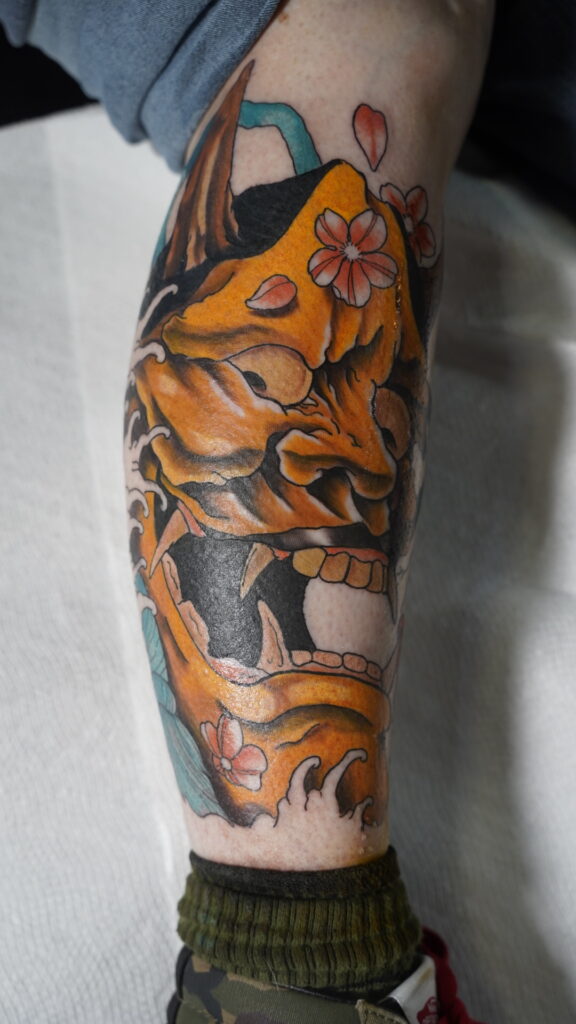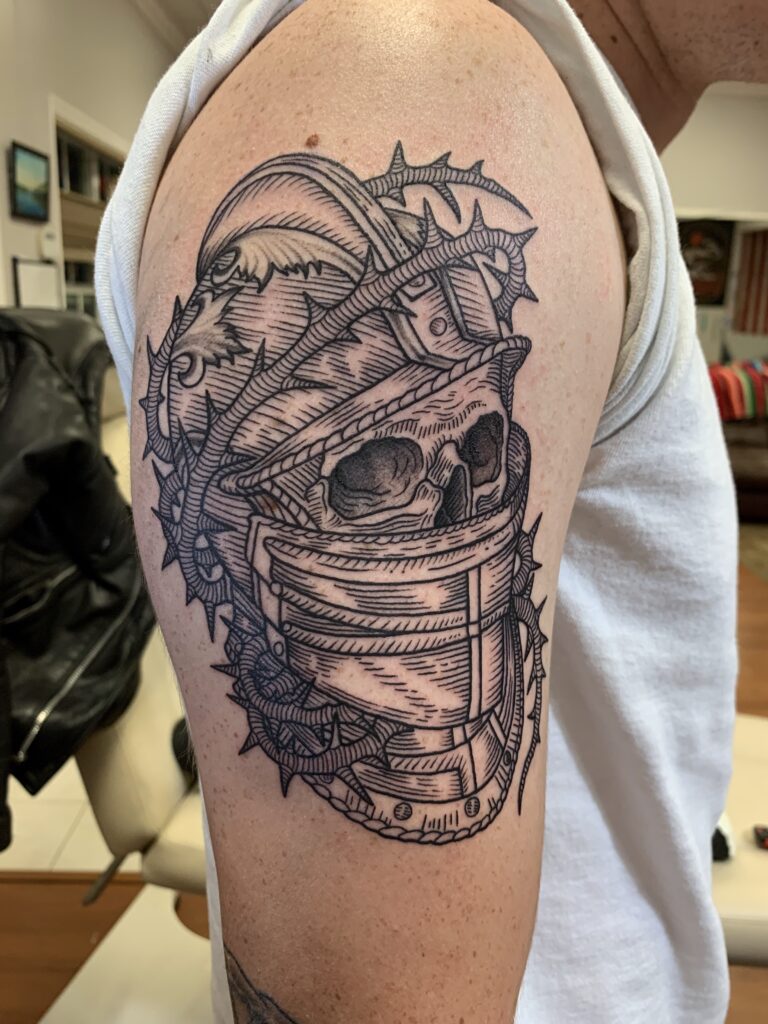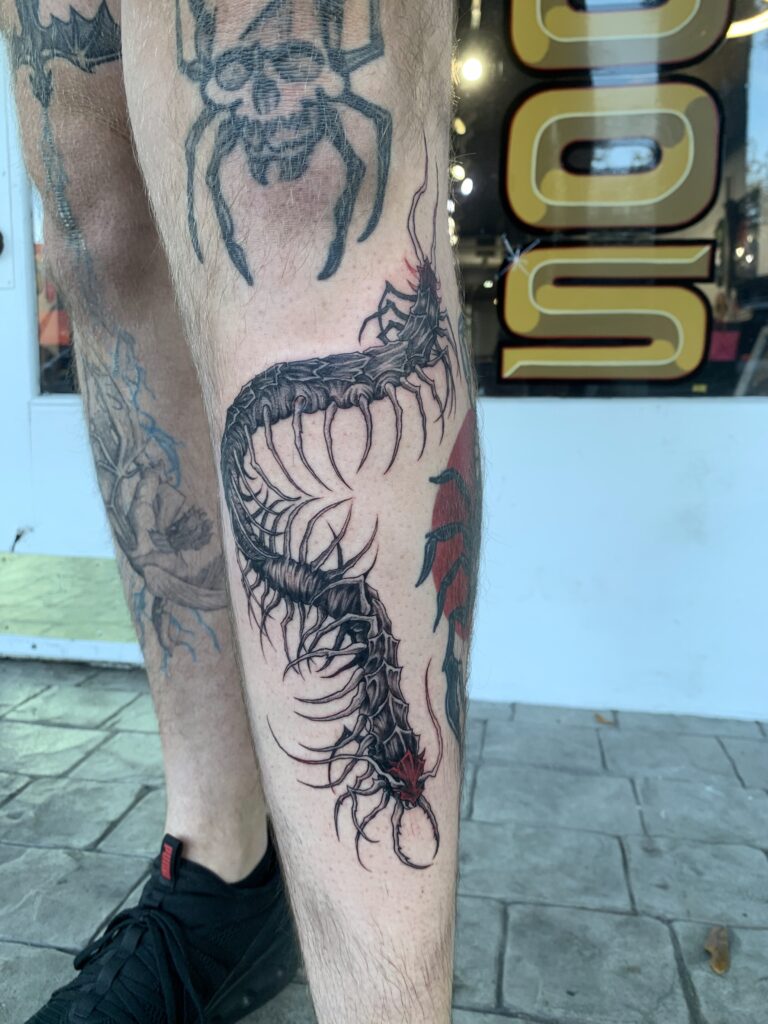Tattoos have long served as personal emblems of identity, survival, strength, and expression. Among the many powerful motifs that have gained cultural traction over the years, the Medusa tattoo stands out as one of the most visually striking and symbolically complex. Her image—serpents for hair, a penetrating gaze capable of turning onlookers to stone—evokes fear, fascination, and awe. But beyond her mythological roots, the Medusa figure holds modern significance that continues to evolve.
This article will explore the origins of Medusa in mythology, her evolving interpretations across cultures and feminist theory, common tattoo design elements and placements, and what motivates individuals to wear her image on their skin. We’ll also examine how Medusa’s story has been reframed in modern times, especially by those seeking to reclaim her symbolism as a representation of survival, autonomy, and transformation.

Origins of Medusa in Greek Mythology
The story of Medusa originates from Greek mythology, where she is described as one of the three Gorgons—sisters with monstrous features. Medusa alone among them was mortal. According to traditional versions of the myth, Medusa was a beautiful maiden who was either seduced or assaulted by the god Poseidon in the temple of Athena. In response, Athena transformed Medusa into a monster with snakes for hair and a gaze that turned anyone who looked at her into stone.
Her story doesn’t end there. Medusa was eventually slain by the hero Perseus, who used a mirrored shield to avoid her deadly gaze, beheaded her, and used her head as a weapon in subsequent myths. In some versions of the myth, Medusa’s head was later given to Athena, who affixed it to her shield, the Aegis, to strike fear into her enemies.
These narratives paint Medusa as both a victim and a villain, a figure whose power comes through transformation and suffering. This duality has made her an enduring symbol for complex personal journeys.

From Monster to Metaphor: Feminist Reinterpretation
In the 20th and 21st centuries, Medusa has been reinterpreted by feminist thinkers and artists who view her story not as one of monstrous punishment, but as a narrative about female rage, survival, and empowerment.
Feminist scholars such as Hélène Cixous have argued that Medusa’s transformation can be seen as a mythologized reaction to sexual violence and patriarchal punishment. Instead of a cautionary tale, Medusa becomes a metaphor for what happens when women reclaim their agency. Her ability to turn men to stone is no longer viewed solely as a threat, but as a form of defense against further harm. In this lens, the snakes and the gaze are not marks of monstrosity but of autonomy and power.
As a tattoo, Medusa becomes a wearable rejection of victim-blaming and societal shaming. For many, she is a guardian of personal boundaries and a reminder that one’s strength can grow out of their most painful experiences.
Modern Symbolism and Popular Interpretations
Today, a Medusa tattoo can represent a wide spectrum of meanings, often depending on the wearer’s personal experiences and worldview. Here are some of the most common modern interpretations:
- Survivor’s Strength: For survivors of assault or trauma, Medusa symbolizes the transformation of pain into strength. She represents the process of regaining control over one’s body, voice, and identity.
- Protection: Just as Medusa’s image was once used on shields and architecture to ward off evil, her likeness in tattoo form is seen by many as a symbol of personal protection.
- Rage and Justice: For some, Medusa embodies righteous anger. Her gaze is not destructive for its own sake but exists as a response to betrayal and violence.
- Complexity and Duality: Medusa is at once beautiful and terrifying, victim and warrior. This duality makes her a fitting representation for those who reject simple labels and embrace nuance in their self-image.

Design Elements and Artistic Variations
The artistic versatility of Medusa makes her an appealing subject for tattoo design. Depending on the visual style and symbolic intent, the tattoo can range from a bold statement piece to a subtle personal emblem.
- Realism and Portraiture: Hyper-detailed, realistic depictions often focus on Medusa’s face, capturing emotion, depth, and the intricacy of her serpentine hair. These pieces are often done in black-and-grey or muted tones.
- Neo-traditional and Illustrative Styles: These designs may emphasize bold outlines, stylized snakes, and vibrant color palettes, offering a more interpretive or decorative take.
- Minimalist Interpretations: A simplified version, such as an outline of her face or a single snake motif, can also carry symbolic weight while being more understated.
- Mythological Scenes: Some tattoos depict the broader myth, such as the moment of transformation, her slaying by Perseus, or symbolic elements like Athena’s shield.
The choice of style affects not just the aesthetic but the emotional tone of the piece—whether Medusa appears as tragic, powerful, serene, or defiant.

Tattoo Placement and Its Symbolism
Where you choose to place your Medusa tattoo can also reflect aspects of its meaning. Some common placements and their potential implications include:
- Forearm or Bicep: A visible location can suggest empowerment, signaling strength to the outside world.
- Chest or Ribcage: A more intimate placement may suggest personal transformation or internalized meaning.
- Back or Shoulder Blade: These placements are often seen as protective, with Medusa guarding your blind spots.
- Thigh or Hip: These areas may convey sensuality, defiance, or introspection, depending on the design.
Ultimately, the best placement is the one that resonates with the wearer’s intent and personal comfort.

Cross-Cultural Symbolism
Though rooted in Greek mythology, the image of Medusa has taken on global relevance. Her figure can be compared to other female mythological figures across cultures who embody themes of protection, transformation, and vengeance.
- Kali (Hindu mythology): A fierce goddess associated with destruction and rebirth, often misunderstood by outsiders but revered within her tradition.
- Baba Yaga (Slavic folklore): A witch-like figure who can be both helper and hindrance, representing the wildness and power of untamed femininity.
- La Llorona (Latin American folklore): A woman whose pain leads to haunting, often interpreted in modern times as a symbol of grief and injustice.
These comparisons underscore Medusa’s appeal as a trans-cultural icon for those reclaiming power in the face of hardship.

Psychological Interpretations
Beyond cultural and feminist theory, Medusa has also been analyzed in psychological frameworks. The image of turning others to stone is sometimes read as symbolic of emotional detachment, self-protection, or trauma responses. From a Jungian perspective, Medusa can be seen as a shadow figure—an archetype that represents the repressed aspects of ourselves that must be integrated for growth.
Choosing Medusa as a tattoo may reflect an individual’s journey toward self-acceptance, the process of facing inner darkness, and transforming it into self-awareness.
Motivations Behind the Tattoo
While some are drawn to Medusa for her aesthetic allure or mythological intrigue, others are motivated by deeply personal experiences. Medusa tattoos are often chosen:
- To mark survival after trauma
- To establish personal boundaries
- To explore or embrace complexity in one’s identity
- To reject traditional narratives about victimhood
- To align with mythic or feminist symbolism
In many cases, the tattoo becomes a daily affirmation—a reminder of what one has overcome or chosen to stand for.
Aftercare Considerations
Proper aftercare is essential to preserve the intricacy and symbolism of your Medusa tattoo. Especially for large, detailed pieces, keeping the skin clean, moisturized, and protected will ensure a clean heal.
Use fragrance-free, tattoo-safe products to prevent irritation or fading. Avoid soaking the tattoo or exposing it to direct sunlight during the early healing phase. If you’re unsure about aftercare routines, always consult your artist for personalized guidance.

Final Thoughts
The Medusa tattoo is far more than just an aesthetic choice. It represents a powerful convergence of mythology, identity, survival, and meaning. Whether you’re drawn to her story as a survivor, a protector, a feminist icon, or a symbol of duality, Medusa offers rich symbolism that continues to evolve with each generation.
In a time when tattoos are increasingly used as a language of the body, Medusa speaks volumes. Her image is not fixed in stone but alive with the interpretations and intentions of those who wear her.
If you’re considering a Medusa tattoo, take time to reflect on what she represents to you. Your meaning will guide the design, the placement, and ultimately the emotional impact of the piece.
Let your story speak—loudly, proudly, and in ink.
